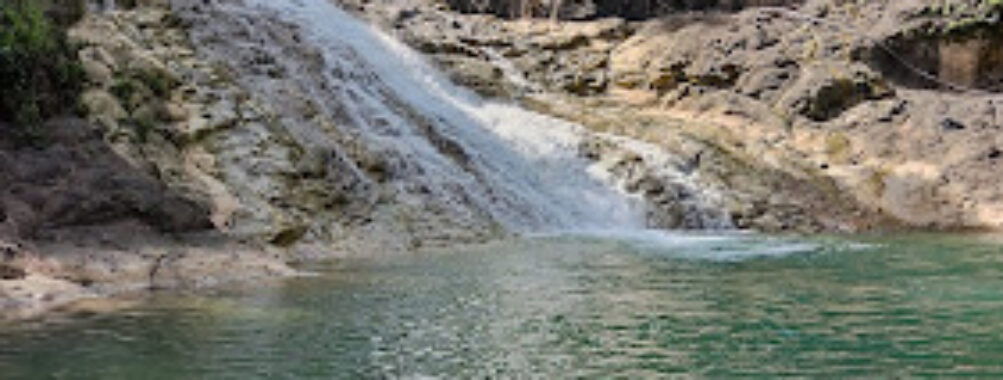
Mantigib Falls
Table of Contents
Mantigib Falls in the City of Guihulngan, within the lush province of Negros Oriental in the Philippines, remains one of those hidden corners of Negros Island that still feels untouched by time. Anyone with a soft spot for raw nature will understand its charm the moment they hear the rush of the cool mountain water echoing through the forest. It’s not one of those crowded, well-known tourist spots you often read about—it’s more like one of those places locals talk about with a bit of pride in their voices. You know, the kind of place that feels like a discovery rather than just another stop on a travel itinerary.
This waterfall sits deep within a tranquil area, surrounded by dense trees, moss-covered rocks, and the comforting sound of the Kansalakan River flowing nearby. The name Mantigib is whispered about with affection among Guihulngan locals because it’s a refreshing retreat for families, nature lovers, and children alike. It’s good for kids—a safe introduction to outdoor exploration without the overwhelming buzz of large crowds.
One of the things that make Mantigib Falls so special is how it offers both serenity and adventure in one neat pocket of the mountains. There’s that stunning turquoise pool at the base, where you can dip and forget about time. And then there’s the uphill trek that rewards your effort with a cool mist on your face. Personally, there’s something about standing at the base of a falls like this—feeling tiny against nature’s rhythm—that always makes life’s worries seem a bit more manageable.
The waterfall forms part of Guihulngan’s growing eco-attraction circuit, along with nearby wonders like the Hinakpan Hills, sometimes compared to the Chocolate Hills of Bohol. Locals and backpackers often combine trips—one day hiking the hills, the next cooling off at Mantigib Falls. There’s a sense that the whole area is expanding quietly as a must-see spot in Central Visayas, but still keeping that down-to-earth, friendly atmosphere that people love about Philippine countryside travel.
Visitors who come here quickly realize it’s not just about taking photos. It’s about reconnecting—with nature, with yourself, with simpler things. Maybe the true treasure of Mantigib Falls isn’t its height or its volume of water, but how it strips away distractions and slows you down.
Timing can change everything about a visit to Mantigib Falls. Between December and May—the dry months—the trail is dry and clearer, making the short hike safer and less slippery. The water remains refreshingly cold, and the sun often peeks through the forest canopy, lighting up the pool in electric shades of teal. It’s during these months that families from Guihulngan or nearby towns like San Carlos or Vallehermoso often pack up for a day at the falls.
Now, if you’re the type who loves that untamed feel, the early part of the wet season, around June or July, gives Mantigib Falls extra volume and drama. The sound alone is enough to make your heart race. But I won’t sugarcoat it—the trail will be muddier, and you’ll need to watch your steps. It’s also smart to check weather updates before heading out since mountain rains can change conditions fast.
For photography enthusiasts, try to visit early in the morning. The light streaming through the trees is just magical—soft, golden, and filtered by the leaves, giving everything a dreamlike glow.
Getting to Mantigib Falls takes a bit of a journey, but that’s half the fun. Most visitors begin from Dumaguete City, the capital of Negros Oriental province, where there’s an airport and various bus terminals. From Dumaguete, you can ride a bus bound for the City of Guihulngan. The trip usually takes around four to five hours depending on traffic and how many stops the bus makes along the highway. You’ll pass scenic towns, rice terraces, and glimpses of the sea on one side and the forested mountains on the other.
Once at the Guihulngan bus terminal, you can hire a tricycle or motorcycle to take you close to the jump-off point. The final stretch involves a short trek down a slightly rugged trail. Some days it can feel like a proper adventure—mud splatters, laughter, maybe a few slips—but that’s part of the story you’ll tell later.
For those coming from Cebu or Bacolod, there are ferries and public buses connecting these larger cities to Guihulngan via San Carlos or nearby ports. The routes along the way are scenic enough to make you forget the long ride. And honestly, once you feel that first rush of spray from the falls, any travel fatigue disappears instantly.
Tip: Bring cash as there are limited ATMs in smaller barangays, and keep your belongings light—you’ll appreciate that freedom while trekking through the forest.
There’s something about places like Mantigib Falls that rewards travelers who come prepared but relaxed. It’s not about rushing through the experience—it’s about soaking it all in, literally and figuratively. Here are some things any traveler (especially first-timers) should keep in mind:
And one last thought—don’t just visit Mantigib Falls to tick it off your list. Stay for a while. Sit quietly and listen to the forest breathe. Maybe you’ll notice how the air feels thicker and sweeter here than in the city. Maybe you’ll realize how rare it is nowadays to find places that make you feel this grounded. Mantigib Falls, with all its unassuming beauty, offers that rare kind of peace.
Description
Key Features
Best Time to Visit
How to Get There
Tips for Visiting
Location
Places to Stay Near Mantigib Falls
Find and Book a Tour
Explore More Travel Guides
No reviews found! Be the first to review!